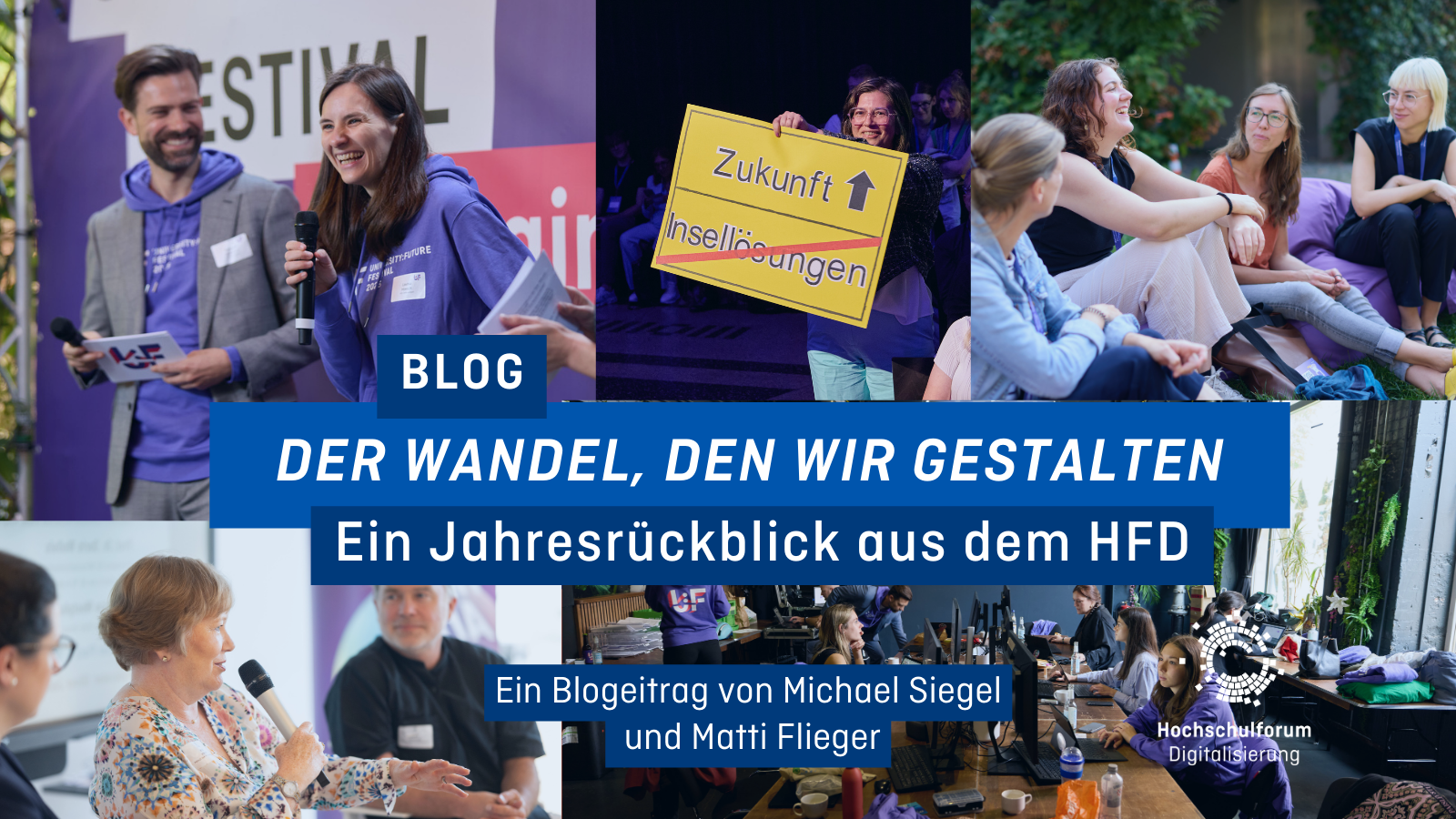Why good teaching is crucial for preparing students for a digitised world
Why good teaching is crucial for preparing students for a digitised world
30.11.18
Digitalisation is a democratising force: we can connect and collaborate with anyone. But digitalisation is also concentrating extraordinary power. Andreas Schleicher, the director of the OECD’s Directorate of Education and Skills, delineates his vision of the digital turn. This article was first published in the 6th edition of the Synergie Magazine.
The backdrop to 21st century education is our endangered environment. Growing populations, resource depletion and climate change compel all of us to think about sustainability and the needs of future generations. At the same time, the interaction between technology and globalisation has created new challenges and new opportunities. Digitalisation is connecting people, universities, countries and continents in ways that vastly increase our individual and collective potential. But the same forces have also made the world volatile, complex and uncertain.
Digitalisation is a democratising force: we can connect and collaborate with anyone. But digitalisation is also concentrating extraordinary power. Google creates more than a million US dollars for every employee[1]—ten times more than the average American company, showing how technology can create scale without mass, leaving people out of the equation. Digitalisation can make the smallest voice heard everywhere. But it can also squash individuality and cultural uniqueness. Digitalisation can be incredibly empowering: the most influential companies that were created over the past decade all started out with an idea, and they had the product before they had the financial resources and physical infrastructure for delivering that product. But digitalisation can also be incredibly disempowering, when people trade their freedom in exchange for convenience and become reliant on the advice and decisions of algorithms.
![Multibillion tech-companies can create scale without mass, leaving people out of the equation Bild: [https://unsplash.com/photos/7_N8NS0ZrWw Jakub Gorajek] Frisco Skyline](/sites/default/files/images/blog/jakub-gorajek-San-Francisco-Skyline.jpg)
On the one hand, education has won the race with technology throughout history. On the other hand, there is no automaticity for that to continue. However, while digital technologies and globalisation have disruptive implications for our economic and social structure including our educational institutions, those implications are not predetermined. It is the nature of our collective responses to these disruptions that determines their outcomes—the continuous interplay between the technological frontier and the cultural, social, institutional and economic contexts and agents that we mobilise in response.
It is likely that future work will pair computer intelligence with humans’ cognitive, social and emotional skills, attitudes and values. It will then be our capacity for innovation, our awareness and our sense of responsibility that will enable us to harness the power of Artificial Intelligence to shape the world for the better. This will enable humans to create new value, which involves processes of creating, making, bringing into being and formulating, and can generate outcomes that are innovative, fresh and original, contributing something of intrinsic positive worth. It suggests entrepreneurialism in the broadest sense—of being ready to try, without being afraid of failing. In this light, it is not surprising that employment in Europe’s creative industries, that is, industries that specialise in the use of talent for commercial purposes, grew at 3.6 %[2] during the crucial period between 2011 and 2013, a time when many European sectors were shedding jobs or showing stagnant employment rates, at best. In several leading European countries, the growth of creative jobs outpaced job creation in other sectors, including manufacturing.
Knowledge and skills have become the currency of modern life
Universities will play a pivotal role in this, and university qualifications are likely to remain the entrance ticket to the digital society for some time. Never before have those with an advanced qualification had the life chances they enjoy today, and never before have those who struggled with a good education paid the price for that which they pay today. I know, there are always those who argue that the share of young people getting into higher education or advanced vocational programmes is getting too high. But they are usually talking about other people’s children. And in the last century, they would have probably argued that there are too many children in high school. The evidence is clear. On average across OECD countries, men with at least a Bachelor’s degree earn over 300,000 USD more than what they pay for their studies or lose in earnings while studying, compared with those who only have a high-school degree. And taxpayers too get over 200,000 USD more for every graduate than what they invest. It is hard to think of a better investment, for individuals and governments alike, at a time where knowledge and skills have become the currency of modern life. And despite the rapid rise in graduates, we have seen no decline in their relative pay, which is so different from those with poor qualifications.
![Higher education is a valuable investment for both government and individuals alike Bild: [https://unsplash.com/photos/YZsvNs2GCPU Good Free Photos] Graduates](/sites/default/files/images/blog/good-free-photos-graduates.jpg)
Education is no longer about reproducing what we know
But it’s also clear that higher education is an expensive entrance ticket to the knowledge society. Moreover, people typically get just one of those tickets. That makes it so important to get it right, both in terms of helping people chose the most appropriate and relevant course of study and to deliver that education in the most effective way. In the digital age, teaching excellence is at the heart of the latter. It is the focus on teaching excellence that helps us to keep the finger on the pulse of effective higher education.
We all know that more education alone doesn’t automatically translate into better jobs and better lives. There is this toxic co-existence of unemployed graduates on our streets, while employers say they cannot find the people with the skills they need. Teaching excellence is about ensuring that the right mix of knowledge and skills is delivered in effective, equitable and efficient ways.
The dilemma for education is that routine cognitive skills, the skills that are easiest to teach and easiest to test, are exactly the skills that are also easiest to digitise, automate and outsource. There is no question that state of the art knowledge and skills in a discipline will always remain important. Innovative and creative people generally have specialised skills in a field of knowledge or a practice. But success in education is no longer about reproducing what we know, but about extrapolating from what we know and applying that knowledge creatively in novel situations. Everyone can search for—and usually find—information on the Internet; the rewards now accrue to those who know what to do with that knowledge.
The value of teaching as a key differentiator is bound to rise as digitalisation drives forward the unbundling of educational content, delivery and accreditation in higher education. In the digital age, anything that we call your proprietary knowledge and content today is going to be a commodity available to everyone tomorrow. Accreditation still gives universities enormous power to extract monopoly rents, but just think a few years ahead. What will micro-credentialing do to this? Alternatively, think of the rapidly improving capacity of employers to see through the degrees of people to what knowledge and skills they actually have. Already now, data from OECD’s Survey of Adult Skills reveal that the skills of people and the degrees they have attained are only fairly weakly correlated.
That leaves the quality of teaching as a highly valuable asset of modern higher education institutions, and as approaches to evaluate the quality of higher education start to reach beyond past reputation and the quality of research, it will become harder for universities to hide poor teaching behind great research. We are living in this digital bazar and anything that is not build for the network age is going to crack apart under its pressure.
While people have different views on the role that digital technology can and should play in universities, we cannot ignore how digital tools have so fundamentally transformed the world outside of school. Everywhere, digital technologies are offering firms new business models and opportunities to enter markets and transform their production processes. No doubt, technology can play an important role to provide faculty with learning environments that support 21st century methods of learning.
I am pretty relaxed when I hear people argue that digital technologies will make the teaching role of faculty redundant. The heart of teaching has always been relational, and teaching seems to be one of the most enduring social activities. So there will be more, not less, demand for people who are able to build and support learners throughout their life.
Still, as in many other professions, digital technologies are likely to assume many of the tasks now carried out by faculty. Even if teaching will never be digitised or outsourced to other places, routine administrative and instructional tasks that take valuable time away from teaching are already being handed over to technology.
In the health sector, we start by looking at the outcomes, we measure the blood pressure and take the temperature of a patient and then decide what medicine is most appropriate. In education, we tend to give everyone the same medicine, instruct all students in the same way, and when we find out many years later that the outcomes are unsatisfactory, we blame that on the motivation or capacity of the patient. That is simply no longer good enough. Digital technology now allows us to find entirely new responses to what people learn, how people learn, where people learn and when they learn, and to enrich and extend the reach of excellent teaching. For example, learners can choose the content that is most relevant and the form of the content that is most accessible to them; they can choose the teacher, mentor, coach or facilitator that speaks best to their individual style of learning, rather than being limited to the one in the geographic vicinity; and they can engage in new forms of learning through highly interactive, non-linear courseware, based on state-of-the-art instructional design, sophisticated software for experimentation or simulation, social media to support learning communities and communities of practice or using gaming in instruction.
We need to embrace technology in ways that elevate the role of faculty from imparting received knowledge towards working as co-creators of knowledge, as coaches, as mentors and as evaluators. Already today, intelligent digital learning systems cannot just teach you science, but they can simultaneously observe how you study, how you learn science, the kind of tasks and thinking that interests you, and the kind of problems that you find boring or difficult. These systems can then adapt learning to suit your personal learning style with far greater granularity and precision than any traditional lecture setting possibly can.
![Meeting the challenges of digitisation, faculty members should assume the role of co-creators of knowledge, as coaches, as mentors and as evaluators. [Bild: https://unsplash.com/photos/5fNmWej4tAA Helloquence] Co-Creation](/sites/default/files/images/blog/cooperation%20and%20cocreation_Helloquence.jpg)
Technology can enable faculty and students to access specialised materials in multiple formats and in ways that can bridge time and space. Technology can support new ways of teaching that focus on learners as active participants. There are good examples of technology enhancing experiential learning by supporting project- and enquiry-based teaching methods, facilitating hands-on activities and co-operative learning, and delivering formative real-time assessments. There are also interesting examples of technology supporting learning with interactive, non-linear courseware based on state-of-the-art instructional design, sophisticated software for experimentation and simulation, social media and educational games. These are precisely the learning tools that are needed to develop 21st century knowledge and skills. Not least, one professor can now educate and inspire millions of learners and communicate their ideas to the whole world.
Perhaps the most distinguishing feature of technology is that it not only serves individual learners and educators, but it can build an ecosystem around learning that is predicated on collaboration. Technology can build communities of learners that make learning more social and more fun, recognising that collaborative learning enhances goal orientation, motivation, persistence and the development of effective learning strategies. Similarly, technology can build communities of faculty to share and enrich teaching and research resources and practices, and also to collaborate on professional growth and the institutionalisation of professional practice.
Last but not least, in the digital age, the priority previously given by universities to inducting a small minority into research capabilities needs to give way to providing a growing part of the population with advanced knowledge and skills. The result has been the rapid expansion of the higher education sector and the establishment of more diverse types of higher education institutions that we can see throughout the globe. There are now over 18,000 higher education institutions that offer at least a post-graduate degree or a four-year professional diploma in 180[3]countries.
This historic shift has been accompanied by changes in funding regimes. The rising costs of higher education are increasingly borne by students themselves, and despite all the rhetoric, expect Germany to follow on this path. Therefore, students are becoming more discriminating consumers. And in making choices between universities, they are placing greater weight on securing valuable future social participation and employment.
This is also creating pressures to take a harder look outwards. Sweeping developments in the higher education marketplace are intensifying competition. China alone has been building almost one university per week over the last years. A global market has emerged, reinforced by digitalisation. In 2015, there were 3.3 million students[4] travelling across the OECD area for study purposes. Others look to the new, internationally available, digital platforms to provide or supplement their learning.
![Globally, the higher education sector is expanding, intensifying competition. [Bild: https://unsplash.com/photos/5fNmWej4tAA Helloquence] Shanghai Skyline](/sites/default/files/images/blog/adi-constantin-Shanghai.jpg)
Taken together, these developments have created a powerful demand for data to improve and measure the quality of teaching and learning in higher education. Institutions need data to build on competitive strengths and address weaknesses. Governments need data to determine policy and funding priorities. Employers need data to assess the value of qualifications. And, very importantly, students themselves need data so that they can make informed decisions about their preferred place of study and show prospective employers evidence of what they have learned.
But the loud demands for data on the quality of teaching, expressed by students, institutional leaders and business, are still often unmet. There is a continuing and damaging absence of information, of a quality to ground credible benchmarking and comparison. And without such data, judgements about the quality of higher education institutions will continue to be made on the basis of flawed rankings, derived not from outcomes, nor even outputs—but from idiosyncratic inputs and reputation surveys.
But while everyone knows how important data are, throwing data into the public space does not in itself change the ways in which students learn, faculty teach and universities. Turning digital exhaust into digital fuel to change education practice requires us to get out of the “read-only” mode of our education systems, in which information is presented in a way that cannot be altered. This is about combining transparency with collaboration.
I am always struck by the power of “collaborative consumption”, where online markets are created in which people share their cars and even their apartments with total strangers. Surely, collaborative has its dark sides and can make people delegate personal autonomy to the dictates of algorithms. But collaborative consumption has made people micro-entrepreneurs—and its driving engine is building trust between strangers. The reason this works is that behind these systems are powerful reputational metrics that help people put faces to strangers and build trust.
What if we could get faculty working on curated crowd-sourcing of best teaching practice, and perhaps even across institutional and national borders? Technology could create a giant open source community of faculty and unlock the creative skills and initiative of so many people, simply by tapping into the desire of people to contribute, collaborate and be recognised for it. And we can use the potential of technologies to liberate learning from past conventions and connect learners in new and powerful ways, with new sources of knowledge, with innovative applications and with one another. That is the future that can help us address the social, economic and environmental challenges of our times and allow people not just to cope but to thrive in an interconnected world.
[1] Siehe auch Statista. Verfügbar unter: https://uhh.de/vnymd [26.06.2018].
[2] Siehe auch BMWi (2017). Monitoringbericht Kultur und Kreativwirtschaft 2017. PRpetuum GmbH München. S. 30. Verfügbar unter: https://uhh.de/0cops [26.06.2018].
[3] Siehe auch OECD (2017) Benchmarking higher education system performance: Conceptual framework and data. Enhancing Higher Education System Performance, OEDC Paris. S. 15. Verfügbar unter: https://uhh.de/v2mbf [26.06.2018].
[4] Siehe auch OECD (2017). Education at a glance: OECD Indicators. OECD Publishing Paris. S. 287. Verfügbar unter: https://uhh.de/8pn0c [26.06.2018].


 Lena Nedwed
Lena Nedwed 
 Michael Siegel
Michael Siegel 
 Andreas Giesbert
Andreas Giesbert 